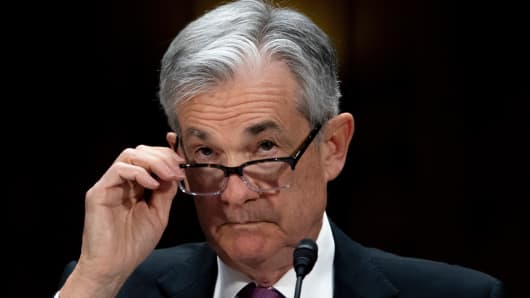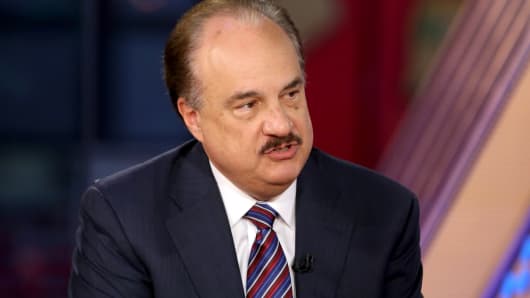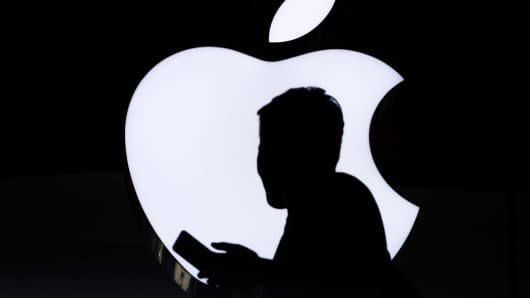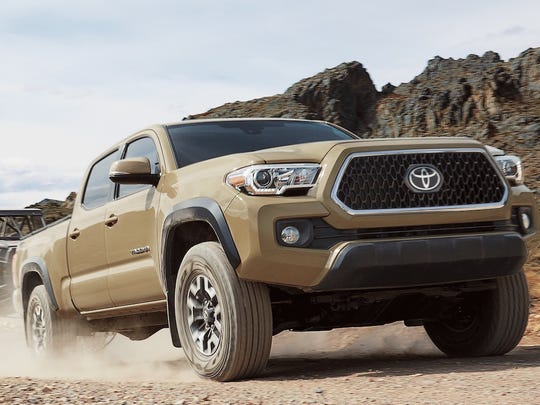
Image source: The Motley Fool.
Oracle (NYSE:ORCL) Q3 2019 Earnings Conference CallMarch 14, 2019 5:00 p.m. ET
Contents: Prepared Remarks Questions and Answers Call Participants Prepared Remarks:
Operator
Welcome to Oracle's third-quarter 2019 earnings conference call. Now I'd like to turn today's call over to Ken Bond, senior vice president.
Ken Bond -- Senior Vice President, Investor Relations
Thank you, operator. Good afternoon, everyone, and welcome to Oracle's third quarter fiscal-year 2019 earnings conference call. A copy of the press release and financial tables, which includes a GAAP to non-GAAP reconciliation and other supplemental financial information, can be viewed and downloaded from our Investor Relations website. On the call today are Chairman and Chief Technology Officer Larry Ellison, and CEO Safra Catz, and Mark Hurd.
As a reminder, today's discussion will include forward-looking statements, including predictions, expectations, estimates or other information that might be considered forward-looking. Throughout today's discussion, we will present some important factors relating to our business, which may potentially affect these forward-looking statements. These forward-looking statements are also subject to risks and uncertainties that may cause actual results to differ materially from statements made today. As a result, we caution you against placing undue reliance on these forward-looking statements, and we encourage you to review our most recent reports, including our 10-K and 10-Q, and any applicable amendment for a complete discussion of these factors and other risks that may affect our future results or the market price of our stock.
And finally, we are not obligating ourselves to revise our results or publicly release any revisions to these forward-looking statements in light of new information or future events. Before taking questions, we'll begin with a few prepared remarks. And with that, I'd like to turn the call over to Safra.
Safra Catz -- Chief Executive Officer
Thanks, Ken. Good afternoon, everyone. I'll first go over Q3 results before moving on to guidance. I'll then turn the call over to Mark and Larry.
As in prior quarters, I'll review our non-GAAP results using constant dollar growth rate, unless I say otherwise. Total Cloud Services and License Support revenue for the quarter was $6.7 billion, up 4% in constant currency, and now accounts for nearly 70% of total company revenue, largely recurring revenue. As in past quarters, we're seeing robust double-digit growth rates for total cloud revenue in all regions, with especially strong growth in Asia Pacific. In terms of product categories, ERP grew in the mid-30s and the verticals grew in the high 30s.
Our software business, which is the totaling of Cloud Services and License Support revenue with Cloud License and On-Premise License revenue is 82% of total revenue and it grew 3% in constant currency. Our software business has remained extremely stable and resilient as we have made the transition to faster-growing SaaS business that entailed trading nonrecurring upfront license revenue for recurrent long-term subscription revenue. Through adoption of autonomous database and OCI, we're now shifting the focus for our infrastructure business to the cloud. As a percentage of our total software business, cloud is now more than double what it was just three years ago and provides us with the ability to accelerate overall software revenue growth as this mix shift continues.
GAAP applications total revenue were $2.8 billion, up 7%, and GAAP infrastructure total revenue were $5.1 billion, up 2%. The gross margin for Cloud Services and License Support was 86%, essentially the same as last year with continuing improvement in SaaS gross margins, stability in software support growth gross margins and continued investment in Oracle cloud infrastructure. Once our cloud business is at scale, I expect our gross margins will go significantly higher. Total revenue for the quarter was $9.6 billion, up 3% from last year.
Non-GAAP operating income was $4.3 billion, up 5% from last year, and the operating margins was 44%, up from 43% last year. This quarter last year was greatly impacted by the change in the U.S. tax book, so comparing the GAAP numbers is not very meaningful after pre-tax income. The non-GAAP tax rate for the quarter was 20%, up from 16% catch-up rate last year, and non-GAAP EPS was $0.87 in USD, and up 12% in constant currency.
This quarter, the GAAP tax rate was 11% and GAAP EPS was $0.76. Operating cash flow over the last four quarters is $14.8 billion. Over the last four quarters, capital expenditures were $1.6 billion and free cash flow was $13.2 billion, down 1% due to timing differences of tax payments and working capital items. We have more than $40 billion in cash and marketable securities.
The short-term deferred revenue balance is $8 billion, up 5% in constant currency. The remaining performance obligations, or what I'll refer to as contract backlog, will be in the Q, and is now $31.5 billion, of which approximately 62% will be recognized as revenue over the next 12 months. Since we remain committed to returning value to shareholders through acquisitions, internal investments and a return of capital with stock repurchases and dividends, this quarter, we repurchased 206 million shares for a total of $10 billion. Over the last 12 months, we repurchased 728 million shares and reduced the absolute shares outstanding by nearly 16%.
And the Board of Directors increased the quarterly dividend 26% from $0.19 to $0.24 per share. Turning to currency. I expect the strengthening U.S. dollar will continue with a currency headwind of 3% for Q4 revenue and a $0.03 headwind to earnings per share.
OK. So with that, let me turn to the guidance. So for Q4, total revenues are expected to grow 1% to 3% in constant currency and zero to negative 2% in U.S. dollars.
Non-GAAP EPS in constant currency is expected to grow between 15% to 19%, and be between $1.08 and $1.12 in constant currency, so we will deliver double-digit non-GAAP EPS growth for fiscal year 2019. Taking into account the $0.03 currency headwind, non-GAAP EPS for Q4 in USD is expected to grow between 12% and 16%, and be between $1.05 and $1.09 in USD. My EPS guidance assumes a base tax rate of 20%. However, onetime tax events could cause actual tax rates for any given quarter to vary from our base tax rate, but I expect that in normalizing for onetime tax events, our tax rate will average around 20%.
And with that, I'll turn the call over to Mark for his comments.
Mark Hurd -- Chief Executive Officer
Thanks, Safra. Thanks. Solid quarter for us, from top to bottom. Total revenue was up 3% in constant currency with Cloud Services and License Support, up 4% and EPS 12% -- plus 12% in constant currency.
In our apps ecosystem, we continued our momentum, growing at 7%, and that was an acceleration for us, and over $11 billion in trailing 12-months revenue and 92% of that is now recurring. We continue to grow revenue faster than market, and we have an enormous opportunity ahead of us in ERP and HCM. In terms of SaaS revenue and bookings, Fusion apps were up 35%. By the way, our overall ERP and HCM annualized SaaS revenue is now $2.8 billion, and that's up in the mid-20s.
Turn to Fusion apps, 35% up, Fusion ERP with -- revenue was up 47% organically. NetSuite revenue was up 28%. Bookings were up actually even higher in the mid-30s. Our vertical revenue was up 38%, and our annualized revenue in the verticals is now over $800 million.
I'm going to read you a quick quote from IDC, and I have to read it precisely or I'll get cards and letters. So let me just make sure I do this exactly as it's written. "Per IDC's latest annual market share results, Oracle is the No. 1 enterprise applications vendor in North America based on market share and revenue, surpassing Salesforce.com and SAP." We've seen this momentum building, so this is not any surprise to us, but I think it's always better when you can see it in real numbers from somebody other than us.
Let me switch briefly to infrastructure. Our GAAP tech ecosystem is $21 billion on a trailing 12-months basis and Q3 was up 2%. In Autonomous Database, our momentum continues to build. We now have 4,000 new trials that were added in Q3 alone, nearly 1,000 paying customers.
We're adding many new customers and we're seeing great pull-through and with 20% of our autonomous data warehouse trials also using analytics. We now have over 35 referenceable customers and we expect to be greater than 100 soon. Cloud and customer revenue was up triple digits for the fourth consecutive quarter. So overall, a solid quarter, as we hit our revenue targets and saw a 12% EPS growth.
The strength of our bookings growth along with climbing renewal rates gives me the confidence that our cloud apps business is only going to strengthen from here and going forward, given the visibility we have into the revenue backlog, which Safra touched on a bit earlier. Looking forward, I do expect FY '20 revenue growth will be higher than FY '19. And EPS this year will be certainly -- grow double digits, as Safra mentioned. I'm going to give you a few customer wins as well, try to give you a flavor for what happened in the quarter for us.
Now most of these didn't affect our revenue, most of these obviously are all really bookings that occurred in the quarter, but I thought I'd give you some context about some people in our user base as well as outside our user base. So for example, Tromp Group in the Netherlands E-Business Suite migration; MasterBrand Cabinets in the U.S. in E-Business Suite migration; thyssenkrupp in Germany in E-Business Suite migration; Willis Towers Watson E-Business Suite migration. I gave you those, just a few of those examples.
Those are core, sort of, E-Business Suite, Black & Veatch was another one engineering company, core, sort of, E-Business Suite customers as we see this acceleration of our user base move into the cloud. Got a couple PeopleSoft ERP migrations, Amica Mutual in the quarter, Depaul University. And then a slew of wins again. And I referenced that a lot of the ERP user base that's out there today is outside of our user base or even our traditional on-premise competitor from, if you will, the old days.
ON semiconductor, nice win in the quarter. Packaging Corporation of America, again, outside of our user base for the quarter. Eaton, leather manufacturer. [Inaudible] in the Netherlands.
I could go on, which, in the sake of time, I won't, although I mentioned Ashford Hospitality. These are, again, outside our user base that are brand-new customers to Oracle in the area of ERP. In HCM, Abu Dhabi Airports; ADT; Alorica; BLOM BANK; Great Canadian Gaming. We had a really nice win in the company called the Nova Healthcare.
This again was not inside our user base. These were attritional Lawson customer, where we actually get multipillar ERP back-office and HCM connected together. So anyway, I'll stop there in the sake of time, but just to really, again, very impressive set of customers and a good mix of net new logos as well as movement from our user base. We had a pretty good quarter and it was some really quality names on the platform side.
Fair Isaac, Generali insurance services in Italy; JOANN Stores; Trans Italia; Unicorp, I mean some really nice beginnings of what you're seeing as we move toward Gen 2 cloud and Autonomous Database. I did want to make a couple of quick comments in our growing relationship with The Gap. So it was a global retailer. It's, I think, most of you know with revenue of greater than $16 billion, and we've been working with The Gap in their transformation to what's really a multi-cloud environment but using many, many Oracle Technologies, may include really everything we got SaaS, PaaS, delivering innovation, reliability and scalability at every turn.
And as part of even the things they're using in the private cloud, those are all really enabled by Exadata, and we're really thrilled to be Gap's strategic partner in their efforts to spin up their new retail brands and stores faster. And so that's the few quick wins for the quarter. So overall, good solid quarter for us on the income statement side, but also in the quality of these bookings that we're describing or that I have been describing. And with that, I'll turn it over to Larry.
Larry Ellison -- Chairman and Chief Technology Officer
Thank you, Mark. Oracle's future rests on two strategic businesses: cloud applications and Cloud Infrastructure. The growth in our cloud applications business has been driven by our Fusion Suite and NetSuite. Both the Fusion Suite of applications and NetSuite are growing very, very rapidly, and Mark gave you the numbers.
As the names imply, both Fusion and NetSuite are integrated suites of applications, including sales, service, human resources, financials, supply chain and manufacturing applications. No other cloud services provider has such a comprehensive suite of applications covering both the front office and the back office. Most customers want their cloud services provider to make their applications work together. Customers do not like to be responsible for the complex process of integrating lots of different applications, running on lots of different vendors' clouds.
We think our integrated suite approach to the cloud applications business is a primary reason for the very rapid growth in our cloud applications market share. The introduction of our Gen 2, a highly secure infrastructure, featuring the Oracle Autonomous Database has been very well received. During Q3, we had nearly 1,000 paying Autonomous Database customers and over 4,000 active trials. Our infrastructure technology is highly differentiated from AWS.
Each one of our cloud computers has a separate security processor and memory to insulate customers from intruding upon each other. And it also makes our cloud control code inaccessible by customers. No other cloud services provider offers this kind of protection across their entire public cloud. The Oracle Autonomous Database is the only database that can respond to a security threat by automatically patching itself while it's still running your application.
No downtime is required. No other database has this capability. Oracle Technology leadership in cloud infrastructure and database plus our market leadership in cloud applications makes us very optimistic about our future. I'll turn it back to you, operator.
Questions and Answers:
Ken Bond -- Senior Vice President, Investor Relations
Operator, if we could move to the Q&A portion of the call, please?
Operator
[Operator instructions] Our first question comes from Heather Bellini with Goldman Sachs.
Heather Bellini -- Goldman Sachs -- Analyst
Thank you. Good afternoon, Mark. I wanted to ask a question of you. Last month when we were together at our tech conference, you reiterated that fiscal second half '19 sales growth would accelerate on a constant-currency basis versus the first half, and I'm not trying to be nitpicky but I think it doesn't look like it's accelerating much.
So I was just wondering if anything changed. And I also wanted to ask about fiscal '20, which you've just mentioned that fiscal '20 constant currency growth would be higher than fiscal '19. I guess what I'm wondering is should we be thinking that that constant currency growth acceleration that you're referring to for fiscal '20 is similar to the type of acceleration on the second half of fiscal '19? Or could it be more meaningful? Thank you.
Mark Hurd -- Chief Executive Officer
Yes. So let's go back to it. I think '19 will grow faster than '18. Second half is, whatever adjective is around it, grow faster than first half.
FY '20, faster than '19. When you're getting underneath at what are the drivers, at a big level, first, our growing businesses are becoming a bigger part of our total than our other businesses. So as an example, just one example, cloud ERP gets bigger, hardware gets smaller, obviously, those have offsetting effects. In addition, we have the things that attach with that, for example, our consulting services business now in on-premise has been declining, but our cloud consulting is inclining as does our overall bookings.
So as a result, these just offset each other. Within it, clearly, I've given you the numbers on certain parts of our apps as the example of ERP and HCM, which are just growing substantively. Larry's comments about Autonomous Database are two huge drivers of growth as we go forward. So I think all of those statements, '19 versus '18, second half, first half, '19 to '20 are all where you're going to see acceleration of top-line growth in CD.
Operator
Your next question comes from John DiFucci with Jefferies and company.
John DiFucci -- Jefferies and Company -- Analyst
Thank you. So your aggregate results have been, I guess, relatively steady might be the right way to characterize it. And during this period, I think investors really appreciate the share buybacks and the dividend, nice dividend increase this quarter. I guess, I want to sort of follow on with that line of thinking, Mark, and this uptick in fiscal '20.
You talked a lot about your cloud apps and we get a lot of information on that, but can you talk a little bit about what extent the database options might be a driver to some of that revenue acceleration? And how big is the middleware business at this point?
Mark Hurd -- Chief Executive Officer
I'll start. I'll let Larry comment also a bit on the trends. I think, first, just when we get into on the database side, I mean, the big move here is to autonomous. I think we try to give you some numbers of the level of interest.
The level of -- the increased in interest coming from even Q -- end of Q1, early Q2 into Q3 was just substantive. It won't show up in our revenue numbers yet, but I'm talking about in terms of trials and people testing, and now, frankly, people buying. And what we've even seen is -- what's really nice, somebody buying something for as small as 15, 20, 25K as their first move into Autonomous Database, and actually even within the quarter making a second purchase that turns into 200K, 250K, these are really encouraging early signs for us. And then to the point that you bring up, we just don't get the database, we get analytics, we get other services that come with it.
So as we continue to convert trials into real usage, real usage into expansion, this becomes a core key driver as we move forward. I'll let Larry follow on with other parts of the options.
Larry Ellison -- Chairman and Chief Technology Officer
Yes. As people use Autonomous Database in the public cloud, they typically got and buy the multitenant option and the Real Application Cluster option, which are required options for Autonomous Database. So there's no question that the introduction of Autonomous Database and the consumption of Autonomous Database as that accelerates, will increase the license purchases of those two options.
John DiFucci -- Jefferies and Company -- Analyst
And just the second part of my question, you used to talk about middleware and how it was -- on-premise middleware stuff wasn't growing all that -- or is declining. I'm just curious, can you tell us even just roughly how big that is at this point? Because Mark, you sort of alluded to some of these other businesses that weren't growing or getting smaller and smaller.
Mark Hurd -- Chief Executive Officer
We never break that out, John. So to my knowledge, unless -- I'm not going to break -- I'm not going to start breaking that today. But clearly, middleware is moving, if you will, from, like everything else, from on-premise into the cloud. We've got a full suite of services in the cloud, but we're not going to break it out into a discrete business today.
Larry Ellison -- Chairman and Chief Technology Officer
Yes. I can tell you a couple of parts in middleware are doing quite well. I mean I think it's a mixed story. I think analytics are doing very well in the cloud as Mark mentioned, 20% of Autonomous Database goes up with analytics and John, we had a very good quarter.
John DiFucci -- Jefferies and Company -- Analyst
Thank you.
Mark Hurd -- Chief Executive Officer
One last point while -- since we did do a little bit of that. Security is faster growing businesses as we can have within the context of the middleware business as well. So again, the problem, middleware, it's not a thing. It's multiple products within it.
Some, like many things we've talked about, many things growing fast and things declining simultaneously.
John DiFucci -- Jefferies and Company -- Analyst
It's great. Thank you.
Operator
Your next question comes from Phil Winslow with Wells Fargo.
Phil Winslow -- Wells Fargo Securities -- Analyst
Great. Thanks for taking my question. I just want to build on John's question there about the reacceleration ahead of us in database. When I think about what really differentiates Oracle and cloud, it's the Gen 2 OCI that we continue to get increasing positive data points on but then also adding autonomous platform on top of it.
And so my question is with the TOMS data warehouse being out for a year and the transactional processing being out since August. How should we be thinking about those two kind of combined to the reacceleration on top of ACI? And you mentioned the 1,000 customers and 4,000 trials, what is actually the driver of people shifting over? Is it speed? Is it cost? Is it performance? Just some more color on that would be great, so timing and then why.
Mark Hurd -- Chief Executive Officer
I'll let Larry start.
Larry Ellison -- Chairman and Chief Technology Officer
OK. All right. So the driver is many different things. Some of our customers were stunned that they can get a database up and running in five minutes.
So we've been collecting references and studying the 1,000 customers and the 4,000 trials, and what they find encouraging about the Autonomous Database. Certainly, we'll call it productivity improvements. The fact that they can go from not having a database, not having a hardware, literally log on to our cloud, create an instance, get -- move their data and be up and running and doing the useful things in five minutes is proving to be a shock to a lot of our customers. So getting things up and running quickly.
Productivity has been a very big issue. We've got one customer who's done a series of tests, they were an AWS user, and I know we have these ads that promise cut your AWS bill in half. They found that we were running 11.5 times faster than they were running in AWS, and they cut their bill by 80%. So that's -- and these are university researchers, so they're very, very cost sensitive and they felt it was worthwhile making the move just because we were much less expensive.
Autonomous Database was way less expensive than Redshift or Aurora at Amazon. Some people, they had an existing data warehouse and with just the compatibility, being able to take an existing data warehouse, not spooling up a new one in five minutes, but taking an existing data warehouse, lifting it and shifting it over. So we're seeing all three of those use cases. Productivity -- motivators, I should say.
Productivity, compatibility and cost, all driving the usage of Autonomous Database.
Mark Hurd -- Chief Executive Officer
So I'd say that we've never had a release in the database area where we could actually talk to a CEO about what was in the release and the CEO would go, I completely get it. I mean it's not like we're talking about partitioning or something like that. When you talk about the fact that this database patches itself, our customers at the CEO level now understand what a patch is. They understand why it's so important, why it's so strategic.
They, in many cases, have to discuss it with their audit committees. And the fact that now patching goes from a problem to where they pass that to us and it gets done instantaneously, we have many customers who said, if this thing did nothing but that, I would migrate to Autonomous Database. If the fact that -- you add to the fact to Larry's point that this database tunes itself, creates all its own index, is it actually it's labor less and can you reapply talent to another area. If it did nothing but that, it would be valuable.
If it did nothing but give you better security and give you pricing performance, and so this is a release that the reason you're seeing the trials and the level why you hear our enthusiasm the way it is, is the customer response is just extremely high because it just makes business sense. This isn't something sold five levels down or four levels down in the order. This can be sold at the top of the company, if you will, at the CEO level. So it's why it's such an exciting release test because at this point it has so many business benefits to our customers as opposed to maybe the fact that you would think of traditionally many of our benefits being, if you will, technical.
It's different explaining to a CEO what multitenant is and what in-memory is than frankly the benefits I've just described.
Phil Winslow -- Wells Fargo Securities -- Analyst
Well, knowing how much we spend on patching, I've got a lead for your CRMs with them.
Mark Hurd -- Chief Executive Officer
I'll stop -- I won't get too specific into your situation, but you're a good use case with a -- a very large bank with a tremendous amount of Oracle that, frankly, in many ways, done a fantastic job, but still has a window that has to be closed. And this -- in terms of patch deployment, then this is one vehicle to -- certainly, a vehicle and the only vehicle I'm aware of to get that done.
Phil Winslow -- Wells Fargo Securities -- Analyst
Well, if Safra can give me some coentertainment for that reference, that will be great. Thank you.
Operator
Your next question comes from Raimo Lenschow with Barclays.
Raimo Lenschow -- Barclays -- Analyst
Hey. Thanks for taking my questions. I wanted to go back to the apps ecosystem. Mark, can you talk about NetSuite because that's accelerated again this quarter.
And obviously, just wondering, like look, when we talked about a few quarters ago, it was like we tried to bring it over 20, but now we're in the high 20s, was there anything special going on? Or is that kind of -- is there anything in terms of new run rate that we need to be aware of?
Mark Hurd -- Chief Executive Officer
Well, I mean, as I've said on multiple calls in a row, they've been doing very well. I mean, this started tremendous acceleration we have last Q4 when their bookings growth was over 70%. And you're just beginning to see that turn into now revenue. So I believe the new rate is sustainable.
And I actually think we can do better. And our strategy has been very simple, and -- but I know I've said it before, but it's been, frankly, no more complicated than adding salespeople internationally and domestically. We've done both to, if you will, localize the product for more countries. We've done many new countries that we've now released.
In addition to that, we've been building out more verticals, what we call SuiteSuccess, where we actually bundled in the implementation with what we sell. And that's very, very popular with our customers. And so I think the team has also done a marvelous job executionally. And it's -- I know I say my comments pretty quick, but as much as the revenue grew in the quarter, our bookings actually grew faster than the revenue.
And so we're very excited about NetSuite. We have been excited about NetSuite, and I think that we'll continue to perform. And I actually think we can do better than even what I've just described today.
Raimo Lenschow -- Barclays -- Analyst
Thank you.
Operator
Your next question comes from Michael Turits with Raymond James.
Michael Turits -- Raymond James -- Analyst
Hey, guys. Good evening. So you've been seeing accelerating growth in cloud, ERP and HCM and other areas of cloud. Is that growing -- accelerating enough and becoming a big enough piece of the business that we can now start to see an acceleration in the cloud business overall, which has had some other headwinds.
Mark Hurd -- Chief Executive Officer
I mean, I guess I'll start. As I said in my comments, ERP and HCM are becoming a bigger and bigger part of our business. I mean, today, our annual SaaS revenues, ERP and HCM is approaching $3 billion. It's growing sort of mid-20s.
And I think it's going to get nothing but better than better. Again, I don't want to get too positive. Only in the context that we're beginning to see acceleration in some key parts. So we're very focused on our competitors by brand and by industry.
We deploy our sales force against those brands and against those industries as well as into our own user base. And the reason I read the references the way I read them was so you get a flavor that both our own user base is beginning to move in bigger numbers as well as the fact that we get competitive. Remember, most of that user base is not sitting with us or our traditional on-premise competitor. So yes, I mean, clearly it's a point to what I made earlier, and I'll stop after this to say that our growing businesses are becoming bigger and bigger, and you start putting the growth rates I'm describing on numbers like $3 billion, and you can do your own math.
And so we're very confident, and feel very good about our position in those businesses.
Michael Turits -- Raymond James -- Analyst
Thanks, Mark. And if I could a follow-up quick one for Safra. Safra, you managed to keep capex low even with the OCI investment, any reason to expect a change in that trajectory? Will we be spending more capital?
Safra Catz -- Chief Executive Officer
No. I'd say it should be very similar this next quarter to this past quarter. And for the year, it's basically the same. Just a little bit less than last year.
So that's kind of what we're looking at. Of course, if there's a huge opportunity, we may push the gaps a little more. But you have to understand that our SaaS operation is really, really coming and we're getting enormous economies of scale there. That's why the margins keep improving, and so we're able to sort of do it all within the same investment envelope so far.
Michael Turits -- Raymond James -- Analyst
Thank you, guys.
Operator
Your next question comes from Mark Moerdler with Bernstein Research.
Mark Moerdler -- Bernstein Research -- Analyst
Thank you very much for taking my question. I'm going to do something I haven't done in a while, I'm going to take a bit of liberty and ask two questions. The first is for Safra. You talked a bit on the call about cash flow, which has grown double digits, but was down roughly 1%, and you gave some color on the call, but can you talk a little bit more about the underlying factors here? Was timing or your definition of when you recognize cash flow having an impact? Are there other things that are impacting that cash? And then I have a follow-up for more.
Safra Catz -- Chief Executive Officer
I mean there are two things going on. If you look just at the quarter, it's nothing but cash collections, timing of cash collections. Nothing more really than that to focus in on. If you look at year to date, which you may look at in one of the other schedule, it's that and some tax payments.
And that's really the two things going on. So nothing special going on. It happens every once in a while. If you look back previous years, you will see that, and it's a very Q3 thing, frankly because, by then, we're collecting up a lot of previous quarters' bookings -- billings, excuse me, so that's really it.
Nothing special.
Mark Moerdler -- Bernstein Research -- Analyst
Then as a follow-up to Mark, given some color on the Autonomous Database, like can you specifically discuss the types of workloads that are driving adoption of autonomous, and especially new clients, for -- autonomous revenue clients to the Oracle Database?
Safra Catz -- Chief Executive Officer
Larry?
Larry Ellison -- Chairman and Chief Technology Officer
I think the question police ought to get you for announcing you're going to ask two questions as opposed to just doing it.
Mark Moerdler -- Bernstein Research -- Analyst
Sorry, Mark. I said I'd be polite about it.
Mark Hurd -- Chief Executive Officer
Yes. No, that was very thoughtful. Larry, you want to start in on that one?
Larry Ellison -- Chairman and Chief Technology Officer
Sure. I mean, there are a lot -- database does a lot of different things. The researchers that I mentioned earlier that are moving from AWS for a big cost savings, they're doing a combination of machine learning and computer vision to look at tissue samples and detect anomalous cells. Cancer based kit are using computers to diagnose cancer and then that's a combination of machine learning and the Autonomous Database.
And that's an all new application. So there are several people that are coming in with all new applications in the cloud. Especially the ones moving from AWS. Then there are traditional on-premise customers, who are simply taking one of their millions of Oracle databases, there are millions of these things out there and just lifting one of those databases either transaction processing and the associated application, either transaction processing application or a data warehousing application, just lifting it intact, moving the data over and moving the application over to compute, moving the data over to Autonomous Database, and running the same exact thing in the cloud.
They're experiencing, sometimes shocking performance improvements also. I know we have one customer that moved from on-premise into the cloud and the cloud system ran many times faster than their on-premise system. Then there are customers that are moving new -- existing big Oracle customers that are moving new development. The new applications that they're developing from developing them on-premise, they move test and development into the cloud.
And they are the ones that, again, the general reaction there is they're much, much more productive getting running. It's much cheaper to do test and development, much more responsive, much more productive to move test and development from their on-premise infrastructure to the cloud infrastructure. So online transaction and processing, lifting and shifting applications, data warehousing lifting and shifting, test and development, moving from AWS, there are lots of different use cases.
Mark Hurd -- Chief Executive Officer
Just a couple of quick follow ons, one, I'm doing this off the top of my head, Mark, but I'm roughly right. 20% of our customers in autonomous data warehouse or in Autonomous Database right now are net new to Oracle, we did not have them before, net new. And 80% are in our user base, roughly 70%, 75%, there's net no competition at all and the transaction is simply, as Larry described, a migration. 75% are actually into the LOB as opposed to IT, which I look at is very good news as well.
So we've got a lot of underpinning improving dynamics -- in my opinion, they're improving dynamics, in terms of net new customers in addition to moving of our database and certainly analytical data warehousing is probably the biggest individual driver of anything we've got.
Mark Moerdler -- Bernstein Research -- Analyst
Thank you. I appreciate it.
Operator
And your next question comes from Brad Zelnick with Credit Suisse.
Brad Zelnick -- Credit Suisse -- Analyst
Excellent. Thanks so much. My question is for Mark. Mark, as we think about the traction you're seeing in cloud ERP and where the demand is coming from, there's the massive on-premise install base opportunity, but I think some might not appreciate that more than half of the market is the long tail of niche legacy vendors that most people haven't even heard of.
Can you just give us a sense for your success in displacing that long tail? How much you think you're participating there versus the more usual suspects?
Mark Hurd -- Chief Executive Officer
By the way, I think that's exactly right, what you said. So I think it's common thought that the ERP market on-premise is dominated by two vendors: Oracle and the company from Germany. And those two vendors together have less than 50% of the market. We have more Fortune 500 customers, for example.
They have many big customers, but the blizzard of implementations -- or there's a blizzard of companies that have the more than 50% market share, 54%, 55%, most of them have moved into private equity. They're not even public companies. They're on their second or third term through private equity. They've got no migration plan to the cloud.
They've got 2G -- I could go on and on with all of these. And that's why as I mentioned earlier, we actually line up our development resources and our sales resources, very focused on these competitors. They would have names like, I mentioned a couple like McCormack & Dodge, if you've heard of them. IBM, believe it or not, actually has got an old ERP system.
There's a company called Deltek, I mean, there's a company called Lawson, a company called ETHICA, there's tens and tens of these to your point, and these are old, old pieces of code. These need to move. They need to move to a more modern platform and they are, perhaps, as attractive as any other market. And in fairness, our user base actually knows our cloud roadmap.
They actually have confidence in our R&D. They know we're going to be there to migrate them when they want to be there. They actually have less of a sense of urgency, in many cases, to move than the companies you're describing, Brad, because they're in much more desperate situations without a roadmap, without knowing how they're going to get from here to there, knowing their competitors are beginning to move. So we have as much success today, and if you ask one of our salespeople, would you rather have one of these competitive territories where you're going after one of these niche vendors? Or would you rather have an E-Business Suite territory? Many of our salespeople say give me that competitive territory because there's an absolute need to move as quick as you can.
So yes, it's an incredibly attractive market and it's why you hear us keep talking about it so much because the addition of fact is when we sell ERP, we continue to see an attach rate to HCM, and, frankly, an attach rate to even some of our other apps in the CX and front office area as well, so it's why we're so focused on that opportunity.
Brad Zelnick -- Credit Suisse -- Analyst
Awesome. Thanks for the color.
Operator
I will now turn the call back over to Ken Bond.
Ken Bond -- Senior Vice President, Investor Relations
OK, great. Thank you. A telephone replay of this conference call will be available for 24 hours. Dial-in information can be found in the press release issued earlier today.
Please call the Investor Relations department for any follow-up questions from this call, and we look forward to speaking with you. Thank you for joining us today. With that, I'll turn the call back to the operator for closing.
Operator
[Operator signoff]
Duration: 46 minutes
Call Participants:
Ken Bond -- Senior Vice President, Investor Relations
Safra Catz -- Chief Executive Officer
Mark Hurd -- Chief Executive Officer
Larry Ellison -- Chairman and Chief Technology Officer
Heather Bellini -- Goldman Sachs -- Analyst
John DiFucci -- Jefferies and Company -- Analyst
Phil Winslow -- Wells Fargo Securities -- Analyst
Raimo Lenschow -- Barclays -- Analyst
Michael Turits -- Raymond James -- Analyst
Mark Moerdler -- Bernstein Research -- Analyst
Brad Zelnick -- Credit Suisse -- Analyst
More ORCL analysis
This article is a transcript of this conference call produced for The Motley Fool. While we strive for our Foolish Best, there may be errors, omissions, or inaccuracies in this transcript. As with all our articles, The Motley Fool does not assume any responsibility for your use of this content, and we strongly encourage you to do your own research, including listening to the call yourself and reading the company's SEC filings. Please see our Terms and Conditions for additional details, including our Obligatory Capitalized Disclaimers of Liability.
10 stocks we like better than OracleWhen investing geniuses David and Tom Gardner have a stock tip, it can pay to listen. After all, the newsletter they have run for over a decade, Motley Fool Stock Advisor, has quadrupled the market.*
David and Tom just revealed what they believe are the ten best stocks for investors to buy right now... and Oracle wasn't one of them! That's right -- they think these 10 stocks are even better buys.
See the 10 stocks
*Stock Advisor returns as of March 1, 2019
 Jim Watson | AFP | Getty Images Federal Reserve Board Chairman Jerome Powell testifies before the Senate Committee on Banking, Housing, and Urban Affairs on Capitol Hill in Washington, DC, on February 26, 2019.
Jim Watson | AFP | Getty Images Federal Reserve Board Chairman Jerome Powell testifies before the Senate Committee on Banking, Housing, and Urban Affairs on Capitol Hill in Washington, DC, on February 26, 2019.  Cameron Costa | CNBC Larry Merlo
Cameron Costa | CNBC Larry Merlo  Eric Piermont | AFP | Getty Images Zendesk co-founder and CEO Mikkel Svane
Eric Piermont | AFP | Getty Images Zendesk co-founder and CEO Mikkel Svane  S3studio | Getty Images A view of Apple Store at Festival Walk shopping mall in Mong Kok District on August 15 2018 in Hong Kong, Hong Kong.
S3studio | Getty Images A view of Apple Store at Festival Walk shopping mall in Mong Kok District on August 15 2018 in Hong Kong, Hong Kong. 


 Post to FacebookPosted!
Post to FacebookPosted! SUBCOMPACT CAR: Toyota Yaris ToyotaFullscreen
SUBCOMPACT CAR: Toyota Yaris ToyotaFullscreen HYBRID/ELECTRIC CAR: Toyota Prius Frederic J. Brown, AFP/Getty ImagesFullscreen
HYBRID/ELECTRIC CAR: Toyota Prius Frederic J. Brown, AFP/Getty ImagesFullscreen FULL-SIZED PICKUP TRUCK: Ford F-150 Gene J. Puskar, APFullscreen
FULL-SIZED PICKUP TRUCK: Ford F-150 Gene J. Puskar, APFullscreen MIDSIZED CAR: Toyota Camry Hybrid Ian Langsdon, EPA-EFEFullscreen
MIDSIZED CAR: Toyota Camry Hybrid Ian Langsdon, EPA-EFEFullscreen COMPACT LUXURY CAR: Audi A4 Jim Fets, AudiFullscreen
COMPACT LUXURY CAR: Audi A4 Jim Fets, AudiFullscreen LARGE CAR: Toyota Avalon Hybrid Ryan Garza, Detroit Free Press-USA TODAY NetworkFullscreen
LARGE CAR: Toyota Avalon Hybrid Ryan Garza, Detroit Free Press-USA TODAY NetworkFullscreen LUXURY SUV: BMW X5 Robert Hanashiro, USA TODAYFullscreen
LUXURY SUV: BMW X5 Robert Hanashiro, USA TODAYFullscreen SUBCOMPACT SUV: Hyundai Kona Romain Blanquart, Detroit Free Press-USA TODAY NetworkFullscreen
SUBCOMPACT SUV: Hyundai Kona Romain Blanquart, Detroit Free Press-USA TODAY NetworkFullscreen MIDSIZED SUV: Subaru Ascent Mark Phelan, Detroit Free PressFullscreenInterested in this topic? You may also want to view these photo galleries:Replay
MIDSIZED SUV: Subaru Ascent Mark Phelan, Detroit Free PressFullscreenInterested in this topic? You may also want to view these photo galleries:Replay 1 of 10
1 of 10 2 of 10
2 of 10 3 of 10
3 of 10 4 of 10
4 of 10 5 of 10
5 of 10 6 of 10
6 of 10 7 of 10
7 of 10 8 of 10
8 of 10 10 of 10AutoplayShow ThumbnailsShow CaptionsLast SlideNext Slide20. Hyundai Kona
10 of 10AutoplayShow ThumbnailsShow CaptionsLast SlideNext Slide20. Hyundai Kona The Toyota Tundra is the highest ranked large light duty pickup in J.D. Powers overall dependability study for 2019. TANNEN MAURY, EPA-EFEFullscreen
The Toyota Tundra is the highest ranked large light duty pickup in J.D. Powers overall dependability study for 2019. TANNEN MAURY, EPA-EFEFullscreen The highest ranked compact premium SUV is the BMW X3. BMWFullscreen
The highest ranked compact premium SUV is the BMW X3. BMWFullscreen The highest ranked compact SUV is the Chevrolet Equinox. David Zalubowski, APFullscreen
The highest ranked compact SUV is the Chevrolet Equinox. David Zalubowski, APFullscreen The 2019 Audi Q3 is the highest ranked small premiun SUV. AudiFullscreen
The 2019 Audi Q3 is the highest ranked small premiun SUV. AudiFullscreen The Volkswagen Tiguan is the highest ranked small SUV. Volkswagen Fullscreen
The Volkswagen Tiguan is the highest ranked small SUV. Volkswagen Fullscreen The Chrysler Town & Country is the highest ranked minivan. A.J. Mueller, ChryslwerFullscreen
The Chrysler Town & Country is the highest ranked minivan. A.J. Mueller, ChryslwerFullscreen The highest ranked midsize premium SUV is the Lexus GX. David Dewhurst Photography, Lexus Fullscreen
The highest ranked midsize premium SUV is the Lexus GX. David Dewhurst Photography, Lexus Fullscreen The highest ranked midsize SUV is the Hyundai Santa Fe. Hyundai Fullscreen
The highest ranked midsize SUV is the Hyundai Santa Fe. Hyundai Fullscreen The highest ranked midsize pickup is the Nissan Frontier. Nissan, NissanFullscreen
The highest ranked midsize pickup is the Nissan Frontier. Nissan, NissanFullscreen The MINI Cooper is the highest ranked compact sporty car. miniusanews.comFullscreen
The MINI Cooper is the highest ranked compact sporty car. miniusanews.comFullscreen This Buick Verano is the highest ranked compact car. BuickFullscreen
This Buick Verano is the highest ranked compact car. BuickFullscreen The Chevrolet Sonic is a the highest ranked small car. ChevroletFullscreen
The Chevrolet Sonic is a the highest ranked small car. ChevroletFullscreen The Chevrolet Silverado HD is the highest ranked large heavy duty pickup. TANNEN MAURY, EPA-EFEFullscreen
The Chevrolet Silverado HD is the highest ranked large heavy duty pickup. TANNEN MAURY, EPA-EFEFullscreen The Buick LaCrosse is the highest ranked large car. Buick Fullscreen
The Buick LaCrosse is the highest ranked large car. Buick Fullscreen This BMW 5 Series is the highest ranked midsize premium car. BMWFullscreen
This BMW 5 Series is the highest ranked midsize premium car. BMWFullscreen The Toyota Camry is the highest ranked midsize car. ToyotaFullscreen
The Toyota Camry is the highest ranked midsize car. ToyotaFullscreen The Lexus ES is the highest ranked compact premium car. David Dewhurst Photography, Lexus Fullscreen
The Lexus ES is the highest ranked compact premium car. David Dewhurst Photography, Lexus Fullscreen 1 of 19
1 of 19 2 of 19
2 of 19 3 of 19
3 of 19 4 of 19
4 of 19 5 of 19
5 of 19 7 of 19
7 of 19 8 of 19
8 of 19 9 of 19
9 of 19 10 of 19
10 of 19 11 of 19
11 of 19 12 of 19
12 of 19 13 of 19
13 of 19 14 of 19
14 of 19 15 of 19
15 of 19 16 of 19
16 of 19 17 of 19
17 of 19 18 of 19
18 of 19 The Italdesign Davinci. CYRIL ZINGARO, EPA-EFEFullscreen
The Italdesign Davinci. CYRIL ZINGARO, EPA-EFEFullscreen A Lexus RC F Track Edition. Robert Hradil, Getty ImagesFullscreen
A Lexus RC F Track Edition. Robert Hradil, Getty ImagesFullscreen A Renault EZ-Ultimo. Robert Hradil, Getty ImagesFullscreen
A Renault EZ-Ultimo. Robert Hradil, Getty ImagesFullscreen A Skoda Vision iV. Robert Hradil, Getty ImagesFullscreen
A Skoda Vision iV. Robert Hradil, Getty ImagesFullscreen A Lamborghini Huracan EVO Spyder. Robert Hradil, Getty ImagesFullscreen
A Lamborghini Huracan EVO Spyder. Robert Hradil, Getty ImagesFullscreen The Subaru Viziv. CYRIL ZINGARO, EPA-EFEFullscreen
The Subaru Viziv. CYRIL ZINGARO, EPA-EFEFullscreen The new 'Ferrari F8 Tributo' is unveiled during the press day at the '89th Geneva International Motor Show' in Geneva, Switzerland, Tuesday, March 05, 2019. The 'Geneva International Motor Show' takes place in Switzerland from March 7 until March 17, 2019. Automakers are rolling out new electric and hybrid models at the show as they get ready to meet tougher emissions requirements in Europe - while not forgetting the profitable and popular SUVs and SUV-like crossovers. Cyril Zingaro, Keystone/APFullscreen
The new 'Ferrari F8 Tributo' is unveiled during the press day at the '89th Geneva International Motor Show' in Geneva, Switzerland, Tuesday, March 05, 2019. The 'Geneva International Motor Show' takes place in Switzerland from March 7 until March 17, 2019. Automakers are rolling out new electric and hybrid models at the show as they get ready to meet tougher emissions requirements in Europe - while not forgetting the profitable and popular SUVs and SUV-like crossovers. Cyril Zingaro, Keystone/APFullscreen The new E'Mobile Twike 5 is presented during the press day at the 89th Geneva International Motor Show in Geneva, Switzerland, Wednesday, March 6, 2019. The Motor Show will open its gates to the public from March 7, presenting more than 180 exhibitors and more than 100 world and European premieres. Cyril Zingaro, Keystone/APFullscreen
The new E'Mobile Twike 5 is presented during the press day at the 89th Geneva International Motor Show in Geneva, Switzerland, Wednesday, March 6, 2019. The Motor Show will open its gates to the public from March 7, presenting more than 180 exhibitors and more than 100 world and European premieres. Cyril Zingaro, Keystone/APFullscreen The new car Aiways Gumpert Nathalie Racei is presented during the press day at the 89th Geneva International Motor Show in Geneva, Switzerland, Wednesday, March 06, 2019. Martial Trezzini, Keystone/APFullscreen
The new car Aiways Gumpert Nathalie Racei is presented during the press day at the 89th Geneva International Motor Show in Geneva, Switzerland, Wednesday, March 06, 2019. Martial Trezzini, Keystone/APFullscreen The new car Fornasari 311 GT Gigi is presented during the press day at the 89th Geneva International Motor Show in Geneva, Switzerland, Wednesday, March 06, 2019. Martial Trezzini, Keystone/APFullscreen
The new car Fornasari 311 GT Gigi is presented during the press day at the 89th Geneva International Motor Show in Geneva, Switzerland, Wednesday, March 06, 2019. Martial Trezzini, Keystone/APFullscreen The new car Twisted Land Rover Defender is presented during the press day at the 89th Geneva International Motor Show in Geneva, Switzerland, Wednesday, March 06, 2019. Martial Trezzini, Keystone/APFullscreen
The new car Twisted Land Rover Defender is presented during the press day at the 89th Geneva International Motor Show in Geneva, Switzerland, Wednesday, March 06, 2019. Martial Trezzini, Keystone/APFullscreen The new car Eadon Green Zanturi is presented during the press day at the 89th Geneva International Motor Show in Geneva, Switzerland, Wednesday, March 06, 2019. Martial Trezzini, Keystone/APFullscreen
The new car Eadon Green Zanturi is presented during the press day at the 89th Geneva International Motor Show in Geneva, Switzerland, Wednesday, March 06, 2019. Martial Trezzini, Keystone/APFullscreen The new car Engler F.F Superquad is presented during the press day at the 89th Geneva International Motor Show in Geneva, Switzerland, Wednesday, March 06, 2019. Martial Trezzini, Keystone/APFullscreen
The new car Engler F.F Superquad is presented during the press day at the 89th Geneva International Motor Show in Geneva, Switzerland, Wednesday, March 06, 2019. Martial Trezzini, Keystone/APFullscreen The new car Sabarro Renner is presented during the press day at the 89th Geneva International Motor Show in Geneva, Switzerland, Wednesday, March 06, 2019. Martial Trezzini, Keystone/APFullscreen
The new car Sabarro Renner is presented during the press day at the 89th Geneva International Motor Show in Geneva, Switzerland, Wednesday, March 06, 2019. Martial Trezzini, Keystone/APFullscreen The new car Sabarro El-Rickshaw at the 89th Geneva International Motor Show in Geneva, Switzerland, Wednesday, March 06, 2019. Martial Trezzini, Keystone/APFullscreen
The new car Sabarro El-Rickshaw at the 89th Geneva International Motor Show in Geneva, Switzerland, Wednesday, March 06, 2019. Martial Trezzini, Keystone/APFullscreen The New Okcu Mercedes Benz V-Class VIP Edition. Cyril Zingaro, Keystone/APFullscreen
The New Okcu Mercedes Benz V-Class VIP Edition. Cyril Zingaro, Keystone/APFullscreen The Honda E Concept is presented during the press day at the 89th Geneva International Motor Show in Geneva, Switzerland. Cyril Zingaro, Keystone/EPA-EFEFullscreen
The Honda E Concept is presented during the press day at the 89th Geneva International Motor Show in Geneva, Switzerland. Cyril Zingaro, Keystone/EPA-EFEFullscreen The Subaru Viziv. Cyril Zingaro, Keystone/EPA-EFEFullscreen
The Subaru Viziv. Cyril Zingaro, Keystone/EPA-EFEFullscreen Volkswagen Cargo e-Bike is displayed during the first press day at the 89th Geneva International Motor Show in Geneva, Switzerland. Robert Hradil, Getty ImagesFullscreen
Volkswagen Cargo e-Bike is displayed during the first press day at the 89th Geneva International Motor Show in Geneva, Switzerland. Robert Hradil, Getty ImagesFullscreen